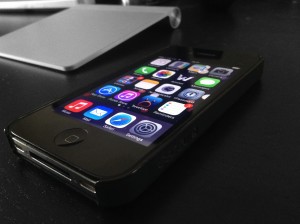This is my iPhone 4. I purchased it more than three years ago.
You don’t get into the technology world without, begrudgingly or otherwise, accepting that things move very fast. What is relevant today may be completely superseded in a matter of months.
A big reason why I have ended up a user of Apple’s iOS ecosystem is that, unlike some of its competitors, there seems to be a genuine focus on the relationship with the customer after you have purchased the device. I can run this old iPhone 4, using the latest operating system that was released this month.
From a security point of view, upon which I can’t resist to comment, the pace of mobile OS development is such that security fixes are not routinely backported to older OSes. You end up with the situation we have today with Android — scores of vulnerable devices out there in the wild.
Aside from some frustrations I do have — the original iPad that was released in the same year as my iPhone 4 is now stuck back on iOS 5 — Apple actually seem to think about device lifespan the least cynically of all the manufacturers. When they were developing the iPhone 4, they clearly thought about how it would run the next three operating systems yet to come.
It can’t be denied that the iPhone 4 isn’t quite as quick and responsive with iOS 7 as it was when it shipped with iOS 4. It doesn’t enable all the fancy features of the new OS. What it is, though, is in line with the performance you would expect from a device that is a little older now. It is definitely acceptable, and probably even good.
This is why I make the purchasing decisions I do. As long as you avoid first generation products(!), you can make an investment in a piece of Apple kit. It is so much more than just a product to shift off the shelf.

